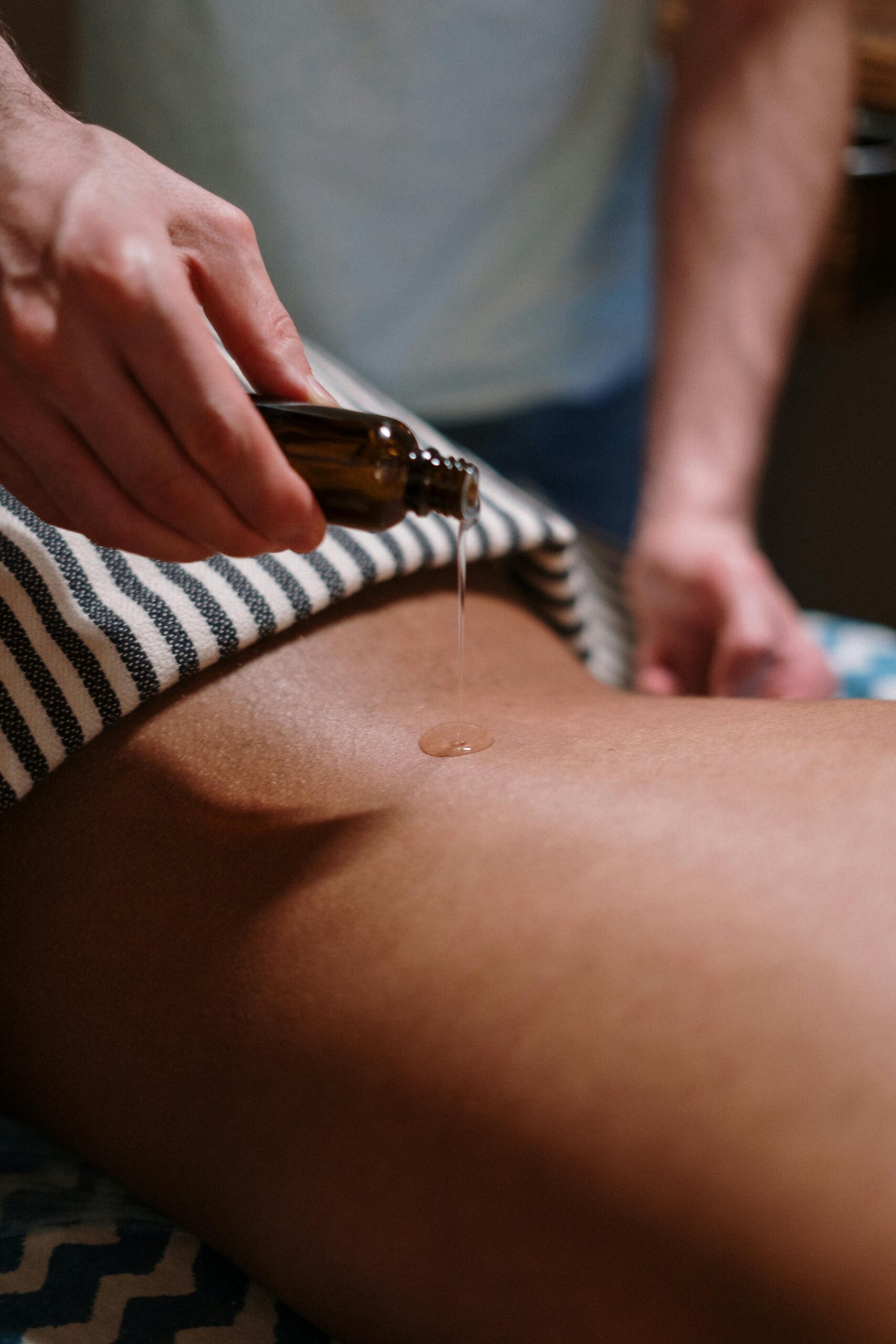What Is The Most Pleasurable Type Of Massage? Massage for Ultimate Relaxation

It’s critical now more than ever to discover ways to decompress and regenerate in a world when stress and tension appear to be everywhere. In their pursuit of ultimate relaxation, a lot of people ask themselves, “What is the most pleasurable type of massage?” This investigation is driven not only by pure curiosity but also by a deep-seated yearning to understand about healing methods that may successfully soothe the mind, body, and spirit. From the soothing Swedish strokes to the focused pressure of deep tissue therapy, each style of massage has advantages and delights of its own.This article will look at a variety of massage techniques meant to help you achieve a happy state of relaxation so you may choose the massage technique that will bring you the most therapeutic joy and satisfaction.
Types of Pleasurable Massages
Exploring different types of massages can be a journey into various cultures and techniques, each crafted to offer unique benefits and sensations. Let’s delve into some popular massage therapies that are renowned for their pleasurable and therapeutic effects.
Aromatherapy Massage
Aromatherapy massage combines the power of essential oils with the relaxing strokes of massage to create a holistic healing experience. Each essential oil has specific properties; for example, lavender is known for its calming effects, while peppermint can invigorate the senses. This type of massage not only helps to relax your mind and body but also aims to balance and rejuvenate your emotional state through the therapeutic properties of oils.
Hot Stone Massage
Hot stone massage is a therapeutic technique where heated stones are placed on specific parts of the body. The stones are usually made of basalt, a type of volcanic rock that retains heat well. The warmth of the stones helps to relax muscles deeply, allowing the therapist to apply deeper pressure if needed. This massage is ideal for easing muscle tension, improving blood flow, and promoting deep relaxation.
Deep Tissue Massage
Deep tissue massage is designed for those who experience persistent muscle discomfort or who are involved in heavy physical activity. This technique focuses on deeper tissue structures of the muscle and fascia, also known as connective tissue. The therapist will use slower strokes and deeper finger pressure to release patterns of tension, focusing on specific areas of discomfort and stiffness.
Reflexology
Reflexology involves applying pressure to specific points on the feet, hands, or ears, which correspond to different body organs and systems. This technique is based on the belief that these points are connected to particular body parts through energy channels. Reflexology is not only pleasurable but is also used to alleviate stress, improve circulation, and support normalized function in the related area of the body.
What Makes a Massage Pleasurable?
The pleasure derived from a massage is influenced by a combination of physical techniques, environmental factors, and personal preferences. Understanding what makes a massage pleasurable can enhance the therapeutic experience and ensure that each session is as relaxing and beneficial as possible.
Therapist’s Technique: The skill and technique of the massage therapist are crucial in delivering a pleasurable massage. A knowledgeable therapist will understand how to manipulate muscles and apply pressure in a way that is both effective and comfortable for the client. Techniques that involve a harmonious blend of smooth, rhythmic motions can induce a deeper state of relaxation and increase the overall pleasure of the massage experience.
Type of Massage: Different types of massages offer varying levels of pressure and techniques, which can cater to personal preferences for pleasure. For instance, some individuals may find the gentle, flowing strokes of a Swedish massage particularly soothing, while others may prefer the intense pressure of a deep tissue massage to relieve deep-seated tension.
Ambiance: The environment where the massage takes place also plays a significant role in its enjoyability. A serene and inviting ambiance, characterized by dim lighting, soft music, and pleasant aromas, can significantly enhance the relaxation and pleasure of a massage session. The setting helps in creating a tranquil retreat from the stresses of daily life, making the massage experience more immersive and enjoyable.
Personal Comfort and Connection: Personal comfort with the massage therapist and the environment contributes significantly to the pleasure of a massage. Feeling at ease to express preferences or concerns about pressure, areas of focus, and techniques can make the massage more tailored and enjoyable. Additionally, a connection with the therapist, marked by trust and communication, can enhance the overall experience, making it more personalized and comforting.
Emotional and Physical State: The individual’s emotional and physical state before and during the massage also affects how pleasurable the massage is. Entering the massage with an open and relaxed mindset, or at least a willingness to unwind, can improve the effectiveness of the massage techniques in inducing relaxation and pleasure. Additionally, specific physical conditions like muscle tension or chronic pain can be alleviated during a massage, adding to the sense of relief and satisfaction.
Response to Touch: The human response to touch—whether it is soothing, invigorating, or healing—plays a pivotal role in the pleasure of a massage. Touch can trigger the release of endorphins, the body’s natural painkillers and mood elevators, which can produce feelings of joy and euphoria during and after a massage.
Benefits of Pleasurable Massages
- Physical Health Benefits
- Improved Circulation: Massages stimulate blood flow, which facilitates the transport of oxygen and nutrients to cells throughout the body. This improved circulation can help with healing and regeneration, making the body more efficient in its operations.
- Pain Relief: One of the most significant benefits of massage is its ability to alleviate pain, whether it’s due to muscle tension, chronic conditions, or injuries. Techniques like deep tissue massage target the deeper layers of muscle to release persistent knots and tension that contribute to discomfort.
- Enhanced Flexibility: Regular massages can increase flexibility and range of motion by loosening tight muscles and connective tissues. This is particularly beneficial for athletes or those who lead active lifestyles.
- Boosted Immune System: Some studies suggest that massage can boost the immune system by stimulating the lymphatic system, which helps the body ward off illness and remove waste products.
- Mental and Emotional Health Benefits
- Stress Reduction: Massages are renowned for their ability to reduce stress levels. The soothing effect of human touch and focused attention on the body can help calm the mind and reduce cortisol levels, a hormone linked to stress.
- Improved Sleep: The relaxing effect of a pleasurable massage can also improve sleep quality. By reducing stress and muscle tension, massages make it easier to fall and stay asleep, which is crucial for overall health.
- Mood Enhancement: The act of massage can increase levels of serotonin and dopamine in the body, neurotransmitters that are linked to happiness and well-being. This can help alleviate feelings of depression or anxiety.
- Long-Term Wellness
- Increased Body Awareness: Regular massage sessions can heighten body awareness, making one more attuned to their physical needs and conditions. This increased awareness can promote better posture and body mechanics, reducing the risk of injury.
- Support for Chronic Health Conditions: People with chronic conditions such as arthritis, sciatica, or fibromyalgia may find massages particularly beneficial. The therapy can help manage pain, improve stiffness, and enhance quality of life.
- Holistic Benefits
- Promotion of Overall Well-being: Beyond addressing specific physical or emotional issues, massages contribute to a general sense of well-being. They provide an opportunity for personal pampering and relaxation, which can improve one’s outlook and approach to life.
Choosing the Right Type of Massage for You
- Understand Your Health Needs
- Physical Condition: Evaluate any specific physical issues you are experiencing, such as muscle tension, chronic pain, or injuries. For instance, a deep tissue massage is excellent for deep-seated muscular problems, whereas a gentler Swedish massage might be better for overall relaxation.
- Health Goals: Consider what you aim to achieve with massage therapy. Are you looking to reduce stress, improve sleep, enhance athletic performance, or manage a health condition? Different massages offer different benefits; for example, sports massages are ideal for athletes, while aromatherapy massages can be great for stress relief.
- Consider Your Preferences
- Pressure Preference: Different massages involve varying degrees of pressure. Some people enjoy the intensity of a deep tissue massage, while others might prefer the lighter touch of a Swedish or aromatherapy massage.
- Sensitivity to Scents: If you are considering an aromatherapy massage, think about your sensitivity to scents. Essential oils are a big part of the experience, and you’ll want to ensure that you are comfortable with their use.
- Consult with Professionals
- Seek Advice from Therapists: A professional massage therapist can provide valuable insights into what type of massage may be most beneficial based on your physical condition and personal health goals.
- Medical Consultation: If you have specific health conditions or are undergoing medical treatment, consulting with your healthcare provider before choosing a massage type is advisable. They can recommend the best approach based on your medical history.
- Trial and Error
- Experiment: Sometimes, finding the right massage type can involve some trial and error. Consider trying different types of massages to see how your body responds to each. This experience can be particularly useful if you are new to massage therapy.
- Feedback: After each session, evaluate how you feel. Did the massage meet your expectations? How did your body react during and after the treatment? This feedback can help refine your preferences and guide your future choices.
- Review Therapist Qualifications
- Certifications and Specializations: Ensure that the massage therapist is qualified and has the necessary certifications. Therapists with specializations in certain types of massage can provide more effective treatments tailored to your needs.
FAQs
What massages are best for stress relief?
- Swedish Massage: Gentle strokes for relaxation.
- Aromatherapy Massage: Uses calming essential oils.
- Hot Stone Massage: Heated stones deeply relax muscles.
How often should I get a massage?
- For general wellness, once a month is typical. For specific issues like chronic pain, weekly or biweekly sessions may be recommended. Consult a therapist for personalized advice.
Are there side effects to frequent massages?
- Generally safe, though excessive sessions can lead to soreness or minor bruising. Communicate any discomfort with your therapist and consult a healthcare provider if you have health conditions.
Can massages improve overall health?
- Yes, benefits include reduced stress, improved circulation, better sleep quality, enhanced immune function, increased mobility, and pain relief. Regular massages support overall well-being.
Conclusion
Determining “What is the most pleasurable type of massage?” is highly subjective and depends on individual preferences and needs. Each style of massage therapy has its own advantages, ranging from the calming strokes of Swedish massage to the focused pressure of deep tissue therapy. The secret is to experiment with various massage styles and determine which methods best suit your body’s requirements as well as your individual relaxation objectives. You may enhance your physical and mental well-being and completely reap the benefits of massage treatment by working with certified specialists and trying out various approaches. In the end, the most enjoyable massage is the one that precisely meets your needs for relaxation, relief, and comfort.

Thank you for sharing this thought-provoking article! It has opened my eyes to the wide range of massage options available and the importance of finding a therapist who understands my individual needs and preferences.
I appreciate you sharing your knowledge and expertise on this topic. I have gained valuable insights that will help me make informed decisions about my massage therapy experiences.
This article is a breath of fresh air in the world of massage therapy. It moves away from generic recommendations and encourages readers to explore their own preferences to discover the most pleasurable massage experience for them.